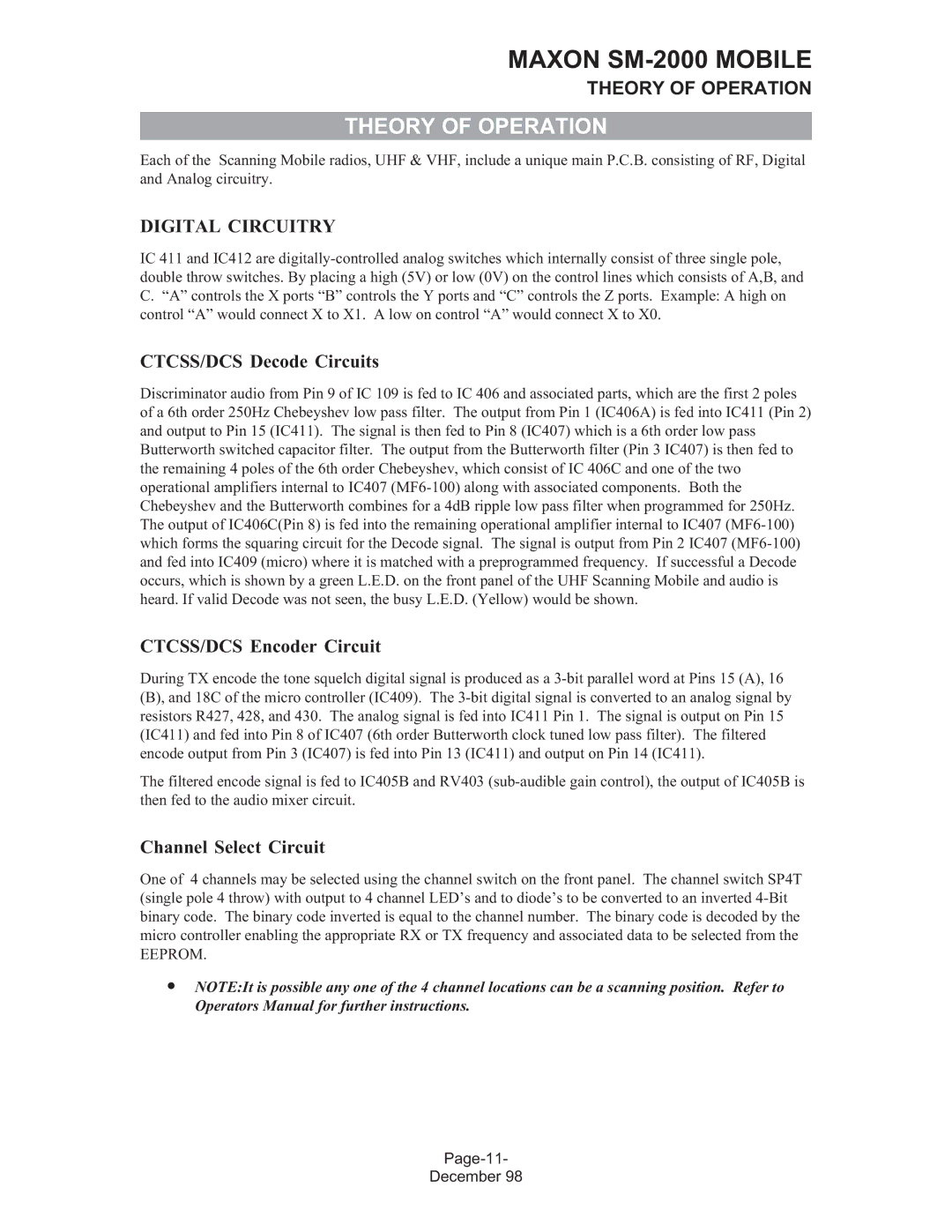MAXON SM-2000 MOBILE
THEORY OF OPERATION
THEORY OF OPERATION
Each of the Scanning Mobile radios, UHF & VHF, include a unique main P.C.B. consisting of RF, Digital and Analog circuitry.
DIGITAL CIRCUITRY
IC 411 and IC412 are
C.“A” controls the X ports “B” controls the Y ports and “C” controls the Z ports. Example: A high on control “A” would connect X to X1. A low on control “A” would connect X to X0.
CTCSS/DCS Decode Circuits
Discriminator audio from Pin 9 of IC 109 is fed to IC 406 and associated parts, which are the first 2 poles of a 6th order 250Hz Chebeyshev low pass filter. The output from Pin 1 (IC406A) is fed into IC411 (Pin 2) and output to Pin 15 (IC411). The signal is then fed to Pin 8 (IC407) which is a 6th order low pass Butterworth switched capacitor filter. The output from the Butterworth filter (Pin 3 IC407) is then fed to the remaining 4 poles of the 6th order Chebeyshev, which consist of IC 406C and one of the two operational amplifiers internal to IC407
CTCSS/DCS Encoder Circuit
During TX encode the tone squelch digital signal is produced as a
The filtered encode signal is fed to IC405B and RV403
Channel Select Circuit
One of 4 channels may be selected using the channel switch on the front panel. The channel switch SP4T (single pole 4 throw) with output to 4 channel LED’s and to diode’s to be converted to an inverted
EEPROM.
∙NOTE:It is possible any one of the 4 channel locations can be a scanning position. Refer to Operators Manual for further instructions.
December 98
